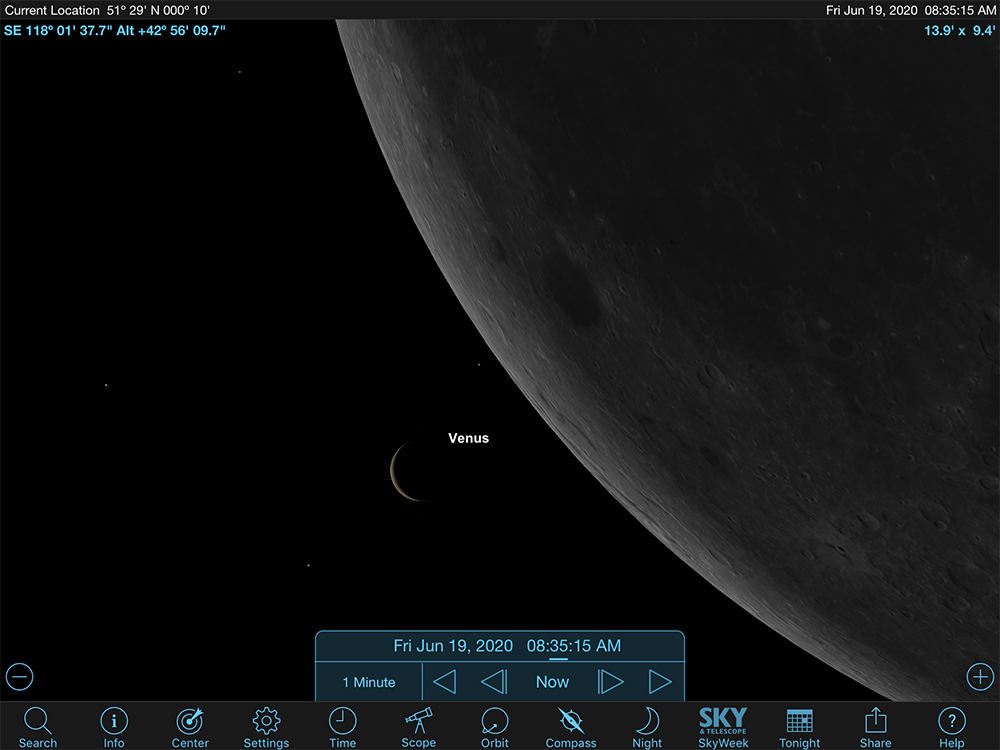First the warning. Pointing optical aid such as binoculars or telescope at a daytime sky can be incredibly dangerous and should only be attempted if you are experienced observer. You should always ensure that the optical instrument is not pointed at or near the Sun before observing through it, and keep all sweeping to a minimum and always in the direction away from the Sun. If you can position yourself so the Sun is hidden behind a building, all the better still.
To the casual observer, the motion of solar systems bodies is far from obvious. Occasionally, nature provides examples where the constant dance of the planets and moons is readily apparent, such as eclipses and the transits of Mercury and Venus. Another such example, is occultations by our nearest celestial neighbour the Moon. Most often, that takes the form of the Moon snubbing out the light of a distant star, but just occasionally, it also plays hide and seek with one of the planets of the solar system. This coming Friday, 19th June 2020, there will be a daylight occultation of Venus by a 27.7-day old waning crescent Moon. This event will be visible from the UK.
Unless you have particularly acute vision, Venus at magnitude -4.3 and 51” diameter will be hard naked eye, but easy in binoculars. However, the Moon is going to be very tricky at 3.9% illuminated and only magnitude -2.5 in a bright daytime sky.

Relative location of Venus and the Moon, approximately 5 mins before the occultation begins. Source: Sky Safari 5 Pro
Depending on observer location, the timing of the event can vary by several minutes so check your locale times with any planetarium software, such as Sky Safari. Though true first contact will not be visible as it will be the dark side of Venus, for London, visible contact of the horns of the narrow 7.8% illuminated Venusian disk occurs at 8:39:30 BST.
Second contact (full occultation of Venus) occurs at 8:40:53.
Third contact is also not visible due to the emergence of the dark side of the disk. The visible disk begins to emerge at 09:42:14 BST. The end of the occultation happens at 09:43:51 BST.
The coordinates of Venus just before the illuminated disc begins to disappear, is 43o 27’ altitude and azimuth of 119o 04’. Conversely, the emergence of the visible crescent, is located at an altitude of 51o 09’ and azimuth of 138o 08’.
If you are going to attempt this observation, ensure your safety and fingers crossed for clear skies.





